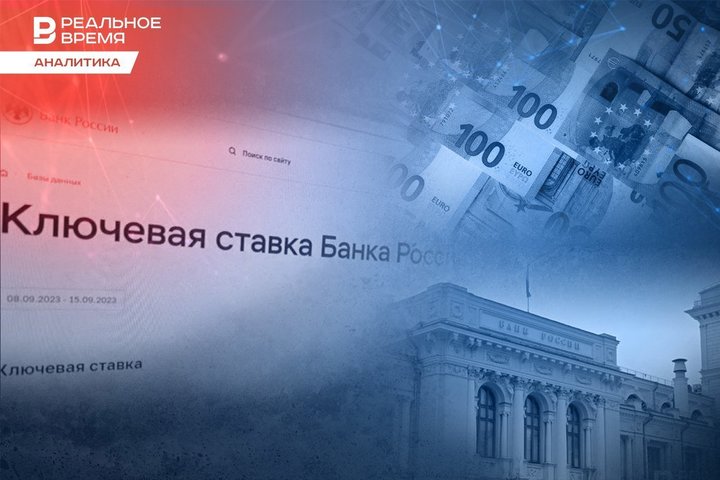‘It’s going to be hard’: Central Bank of Russia to keep monetary policy tough yet
Bank of Russia is likely to keep the key rate at 16%

Today, the Central Bank is holding a regular meeting on the key rate, the main indicator of the cost of credit and profitability of deposits in Russia. The reduction of the key rate is hampered by inflation, which accelerated to 7.82% in mid-April. Among the main reasons for the price increase are the warming up of the economy, wage increases due to labour shortages and the indexation of social benefits. When to expect a decrease in inflation and the key rate — in the review of the analytical service of Realnoe Vremya.
Inflation peak left behind
Following the results of the March meeting, the Bank of Russia kept the key rate at 16%. The head of the Central Bank of Russia, Elvira Nabiullina, also revealed the criteria by which the regulator can begin to reduce the rate — this is the stability and rate of decline in current inflation; the dynamics of inflation expectations; a more balanced dynamics of consumer activity, lending and imports, as well as a reduction in the rigidity of the labour market. Speaking at the plenary session of the State Duma of Russia on April 10, Nabiullina confirmed that the peak of inflation was left behind, but the key rate would begin to be lowered only when the regulator was convinced that the slowdown in inflation had gained the necessary pace, said Olga Belenkaya, the head of the macroeconomic analysis department at Finam.
By the April meeting, according to her estimates, noticeable progress had been made in terms of the conditions for lowering the rate — current inflation slowed to 4.5% in March, inflation expectations of the population fell to 11% in April (at least since July last year), the situation with the foreign trade balance improved (exports increased markedly in March, and imports decreased yoy).

Olga Belenkaya believes that at the meeting on April 26 the Central Bank keeps the key rate, but at the same time, may soften the rhetoric somewhat. “Perhaps, a signal will be given confirming that, with the development of the situation according to the baseline scenario, conditions for a reduction in the key rate may develop in the second half of 2024," she suggests.
So far, the rhetoric of the regulator's representatives has indicated a likely transition to a reduction in the key rate no earlier than the second half of 2024, and strong economic growth at the beginning of the year may support this mood at the upcoming meeting, Belenkaya believes. “As a counterargument, it can be noted that with current inflation slowing down and the nominal key rate remaining at 16%, the rigidity of monetary policy is increasing and is now at its maximum in at least 10 years," Belenkaya notes.
Rate will not change on June 7 either

The reduction of the key rate is hampered by steady resistance to inflation, which does not decrease, despite that the key rate exceeds annual inflation by more than two times.
Annual inflation, calculated according to the Central Bank's methodology, accelerated to 7.82% on April 15 from 7.75% on April 8. Among the main reasons for the price increase are the warming up of the economy, wage increases due to labour shortages, and the indexation of social benefits. In the second half of the year, the increase in prices will be facilitated by an increase in tariffs for utilities from July 1.
Scenario of a rate cut is still unlikely
Financial expert, member of the RSPP Commission on Banks and Banking, PhD in Economics Yan Art also believes the key rate to be kept at 16%.

Since October 2023, the largest exporters are required to transfer 80% of foreign exchange earnings to accounts in Russia and sell 90% of this volume. This requirement was introduced against the background of the fall in the ruble exchange rate. It affected 43 groups of companies from the sectors of the fuel and energy complex, ferrous and non-ferrous metallurgy, chemical and forestry industries, as well as grain farming.
“The combination of a high rate and the norm for the mandatory sale of foreign exchange earnings has been ensuring a stable ruble exchange rate for more than six months. There is only a slight tendency towards a slight devaluation, which is not a driver of inflation and does not bother people and businesses," the expert explains.
According to Yan Art, the key rate could even be lowered slightly, but with the current situation in oil prices, which have gone down, and a smooth reduction in Russia's export-import surplus, this scenario is unlikely.
Consumer demand is at record levels
“There is currently an unstable balance between growing consumer demand and the production of consumer goods," said Maxim Pleshkov, the chief bond analyst at SOLID Broker. “Consumer demand is at a record level, exceeding even the pre-pandemic March 2020 level. Demand is driven by a low unemployment rate (2.8% in February) and an increase in citizens' incomes (salaries increased by 14% in 2023, excluding inflation by 8%), including due to budget momentum.”
Along with the growth of consumer demand, there is also an increase in the production of consumer goods. Since the summer of 2022, the production of consumer goods has increased by 12-13%. By 4-5% since the beginning of 2024. An indirect confirmation of the saturation of the Russian market with consumer goods of its own production is the generally declining import of goods and services in 2024.

Most likely, not to break the current balance between demand and production, the board of directors of the Central Bank will leave the key rate unchanged at 16% on April 26, the analyst agrees.
Most bond market analysts expect the start of a key rate cut cycle from the second half of 2024, when disinflationary factors become more clearly defined and annual accumulated inflation begin to decrease.